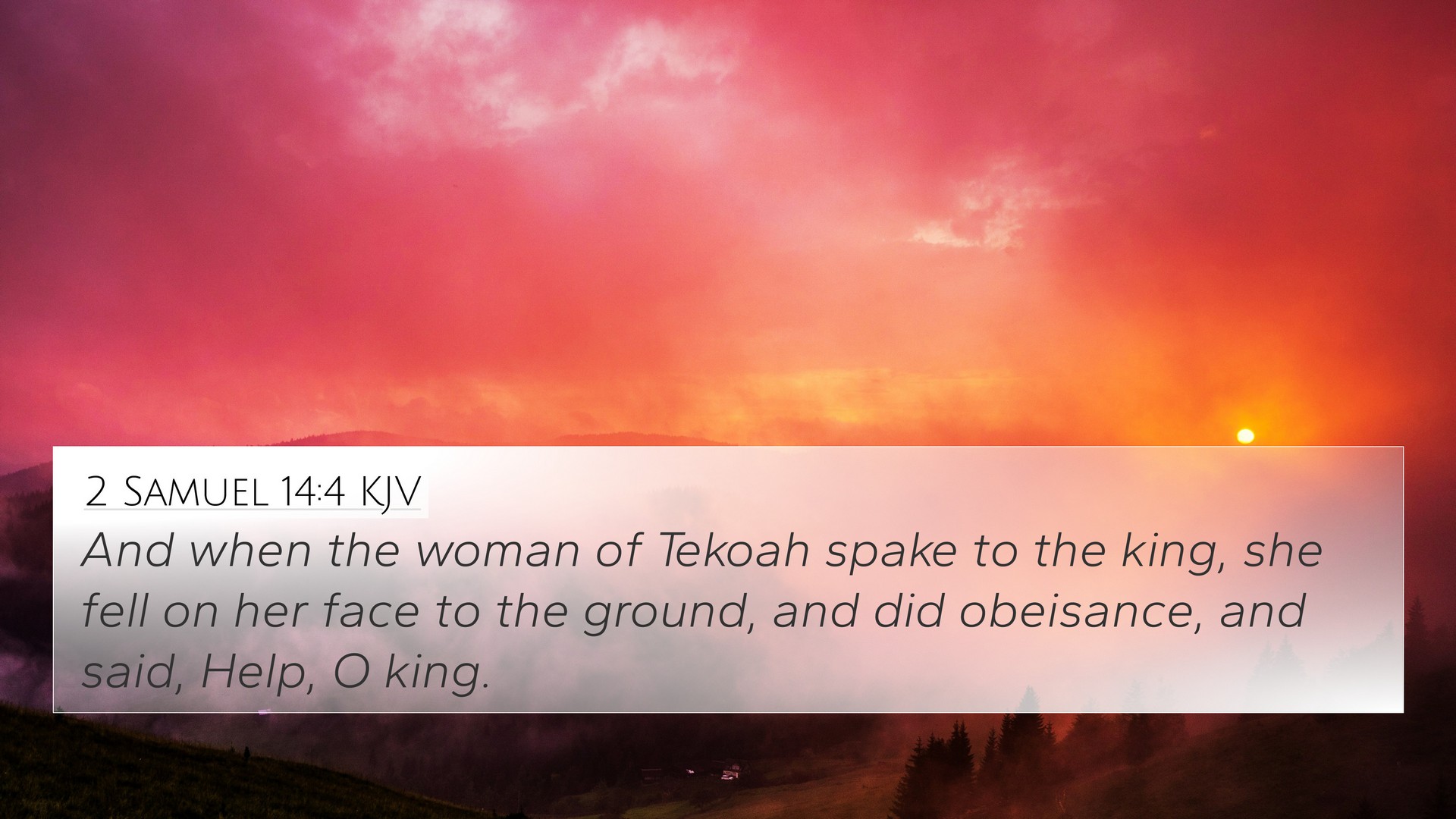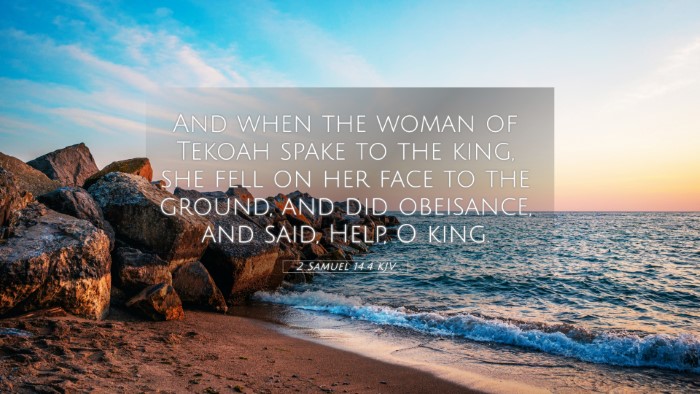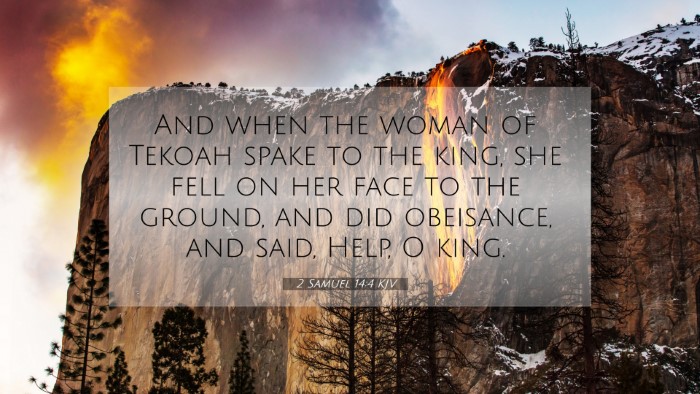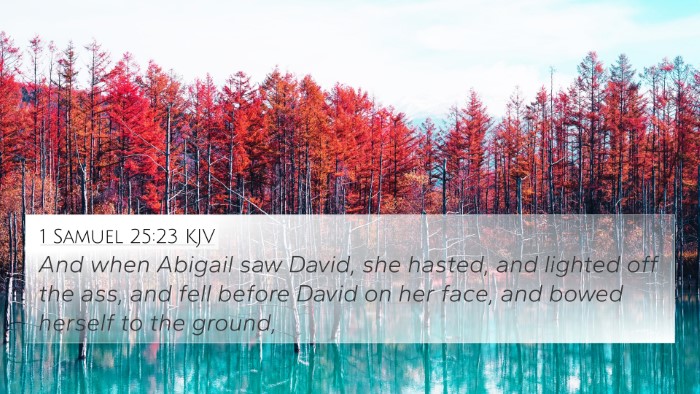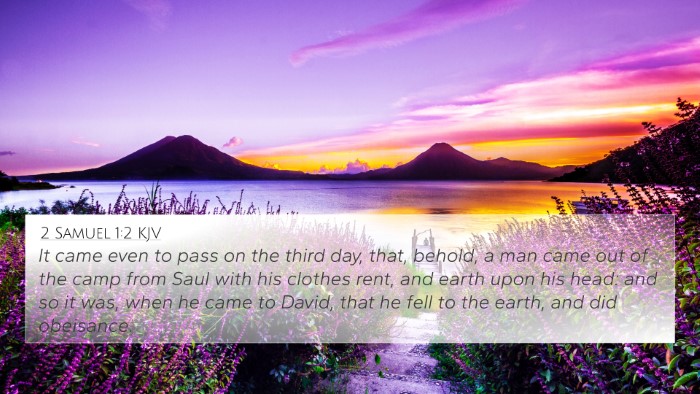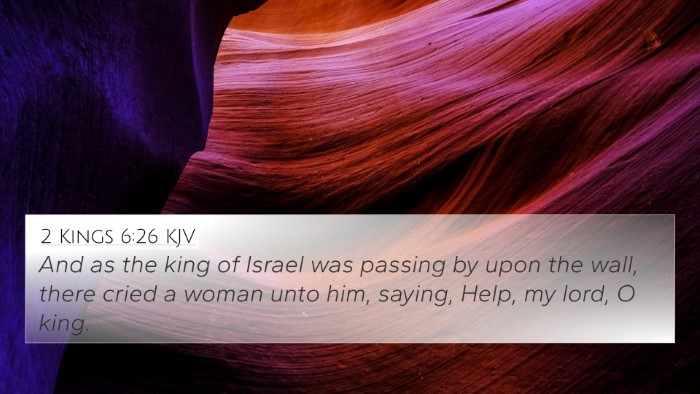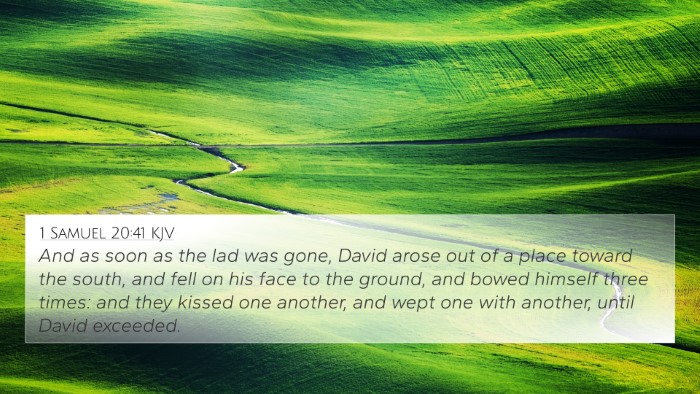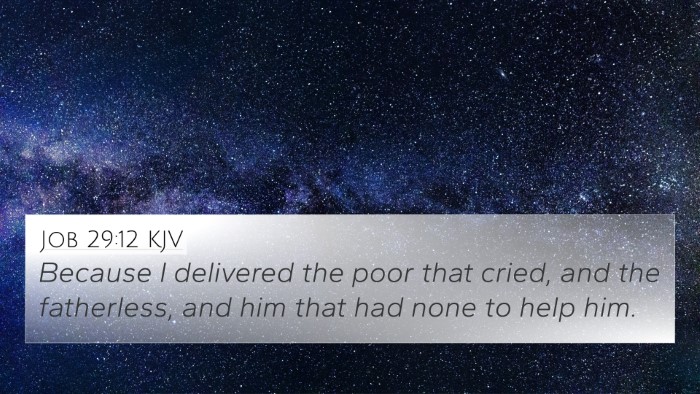Understanding 2 Samuel 14:4
Verse: 2 Samuel 14:4 - "And when the woman of Tekoah spake to the king, she fell on her face to the ground, and did obeisance, and said, Help, O king."
Summary of Insights
This verse introduces a significant moment in the narrative of 2 Samuel, where a woman from Tekoah approaches King David with a plea for help. This encounter is pivotal as it sets in motion events that lead to reconciliation within David's family. Various commentaries provide depth to this moment, reflecting both cultural context and theological implications.
Commentary Insights
-
Matthew Henry's Commentary
Matthew Henry highlights the manner of the woman's approach to David, emphasizing her humility and respect as she prostrates before the king. He notes that her actions signify the desperation and earnestness of her request, which is further underscored by her identification as a widow, tapping into the social concern of her status. This humility not only serves as a model for approaching authority but also reflects the heart of the pleas presented to God.
-
Albert Barnes' Notes
Albert Barnes provides insight into the cultural implications of this interaction, noting that the act of falling on one's face before a king was a customary expression of respect and petition. Barnes suggests that the woman’s posture may symbolize her complete surrender and desperation for royal intervention in her plight. He adds that this encounter demonstrates the rightful authority of the king and the need for his wisdom to address societal issues.
-
Adam Clarke's Commentary
Adam Clarke delves into the historical context of Tekoah, indicating that this town was of strategic importance and known for its wise individuals. Clarke suggests that the woman’s plea might be seen as a representative of her community's suffering, amplifying the urgency of her situation. Additionally, Clarke reflects on the idea of advocacy, showing how individuals can act on behalf of others, which ties into the broader themes of intercession found throughout Scripture.
Bible Verse Cross-References
This verse connects deeply with several other Biblical texts, showcasing thematic links and cross-referencing key concepts of authority, humility, and intercession:
- 2 Samuel 14:1-3 - The prelude to the woman's approach highlights the emotional and familial tensions within David’s reign.
- 1 Samuel 8:5 - A reminder of the people's request for a king, reflecting the responsibilities of a monarch.
- Psalms 72:12-14 - David prays for the welfare of the needy, reflecting his royal obligations.
- Proverbs 21:1 - The heart of a king is in the hand of the Lord—a testament to divine sovereignty in royal decisions.
- Hebrews 4:16 - Encourages believers to approach the throne of grace with boldness, mirroring the woman’s desperate plea.
- James 4:10 - Humbling oneself before the Lord is a key theme, resonating with the woman’s act before the king.
- Luke 18:1-8 - The parable of the persistent widow echoes the theme of fervent intercession.
Inter-Biblical Dialogue
The encounter between the woman and King David can be viewed as a narrative example of how personal and communal needs are brought before those in authority. It serves as a microcosm of how individuals can petition their leaders and, by extension, God for justice and mercy. This scriptural moment encourages the faithful to consider the balance of power and the moral responsibilities of leadership.
Conclusion
2 Samuel 14:4 encapsulates crucial themes of humility, desperation, and the pursuit of justice within the royal context. The woman's actions not only reflect her personal tragedy but also serve as a reminder to the reader of the importance of advocacy, both in the human sphere and in relation to divine justice. By examining this verse and its related texts, one can deepen their understanding of the complexities of leadership and intercession in a biblical context.
Further Study
For those interested in exploring the connections between Bible verses, consider utilizing tools for Bible cross-referencing such as concordances or cross-reference guides. These resources can provide a deeper understanding of how various scriptures link to one another, enriching your study and interpretation of the Bible.
